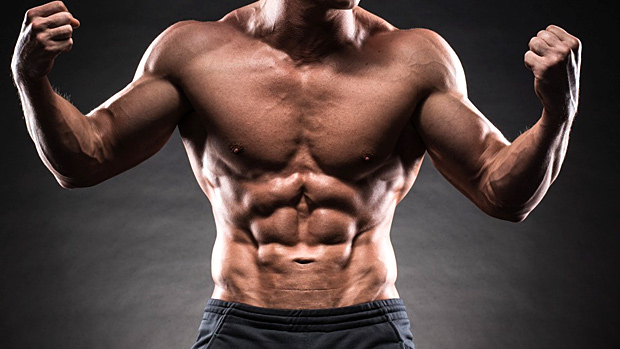I'm in a foul mood. I'm 30,000 feet in the air as I
type this, flying home from Florida where I'd spent the past
week with my girlfriend eating copious amounts of dead animal
flesh, loading up on Vitamin D, and not doing anything but lying on
the beach.
The weather back in Boston? 35 degrees and raining. In mid-May.
Awesome.
So I figured, what better way to channel my aggression than to
write an article ranting on things I've seen in the gym that
have been making my eyes bleed? If any of the following describes
you, consider this a warning shot across your bow. Your training
ways suck harder than the Pirates of the Caribbean franchise.
Coaching vs. Collecting Money
At Cressey Performance, we take pride in that we give every
client that walks through the door our full, undivided attention.Every client goes through a thorough assessment, and afterwards,
every client receives an individualized program that's
designed with their wants and needs in mind; taking into
consideration their training history, injury history, goals,
postural deficiencies, mobility restrictions, weaknesses,
strengths, and imbalances, just to name a few.
What's more, with every client, we take the time to
actually coach. Meaning, they're not just handed a program,
patted on the head, and sent on their merry way.
We coach how to squat to proper depth and how to deadlift
without rounding the back. We teach why an arch in the lower back
can improve the bench press, why push-ups (and all their infinite
variations) will not only improve core stability, but help the
squat and deadlift as well. We teach why, even if folks don't
think so at the moment, the Prowler is their new best
friend.
I'm constantly walking around cueing people,
loading/un-loading weights, standing up, squatting down, poking and
prodding, and otherwise burning a ton of calories simply coaching.
Sadly, this isn't what I see whenever I travel and train at
the local Globo Gym. Sure, there are exceptions to the rule, but
it's rare. For instance, take the trainer I watched while I
was on vacation who took his male client through the most boring,
mundane, worthless training session I'd ever witnessed, which
included the following gigantic wastes of time:
| Exercise | |
| A1 | Biceps curls |
| A2 | Cable triceps kickbacks |
| B1 | Some kind of squat thingamajiggy with a Swiss ball against the wall |
| B2 | DB lateral raise |
| C1 | Sit-ups (really?) |
| C2 | One-legged Romanian deadlift in the Smith machine on an Airex pad * |
* probably the most retarded thing ever
Basically, a ham sandwich could've written that workout.
What's sad is that whoever the client was, he undoubtedly paid
good money for the session.
In the entire hour I spent eavesdropping, not once did this
trainer correct his client's form, and believe me, he could
have used it. Moreover, the clipboard cowboy didn't even have
his client do anything that was remotely challenging, or even
requiring brain activity for that matter. Essentially, all this
douchebag did was show up, count a few reps here and there, and
collect his money.
This is an unfortunate trend I see in this industry, and
it's something that really pisses me off.
So, while I'm going to cut this one short because I can
feel my face getting red just thinking about it, if there's
one piece of advice I can give to any personal trainers or coaches
who may be reading this article – please stop sucking. Any
moron can show someone how to use a leg curl
machine.
The fact that you're even reading T NATION is a great
start. Kudos.
Yes, I Eat A lot of Eggs – Deal With
It

I love eggs. What's not to love, really? They provide a
plethora of vitamins and nutrients, are considered a nutritional
powerhouse, taste absolutely delish, and not to go all Bubba Gump
on you, they can be used in a million and one ways. Oh, and lest we
forget that they're arguably one of the best protein sources
on the planet?
Actually, scratch that. There really is no argument – eggs
arethe best protein source on the planet. As Jonny Bowden notes in
his phenomenal book, The 150 Healthiest Foods on Earth, on
three of the four scientific scales for protein quality used in the
past few decades – Protein Efficiency Rating, Biological
Value, and Net Protein Utilization – eggs consistently score
highest in the quality of their protein, soundly beating milk,
beef, whey, and (at the expense of my sperm count dropping just
thinking about it) soy.
I'm not referring to egg whites either, you Prius-driving,
Twilight-reading, John Mayer listening Sally! I'm talking
about the entire egg, yummy yolk included. While I don't have
any hard scientific research to back it up, I'm certain that
every time you toss a yolk down the drain, a kitten is
strangled.
So is it any wonder then that I feel like going postal every
time I go to the grocery store and the chubby, Bubble Yum-chewing
cashier invariably makes a comment on how many eggs I eat or my
other food selections?
"Wow, you eat a lot of eggs."
Or,
"Boy, you sure do like your vegetables. Making a salad for
dinner?"
Or,
"Sir, could you please put your shirt back on?"
Okay, maybe that last one only happens to me.
Once, a cashier – who happened to be 25-30 pounds overweight –
had the wherewithal to ask, "When was the last time you had
your cholesterol checked?"
The funny thing is, she didn't seem concerned with the
person ahead of me who had nothing but Kraft Dinner, potato chips,
ice cream, cookies, and Coke Zero (of course) in her cart. All of a
sudden, the health police come out when someone has the nerve to
buy more than three cartons of eggs.
Three bags of Doritos? Completely normal. No side comments for
those customers, like maybe:
"Attention all shoppers, looks like someone's emotionally eating today!"
Or,
"Are you paying with cash, credit, or type II Diabetes?"
Eat your damn eggs. And no, Egg Beaters don't count!
Are Orthotics Really Needed?
I know I'm setting myself up for a nuclear bomb of hate
mail for even broaching this topic – I can already hear the
tapping of the keyboards from therapists shitting a Dr.
Scholl's insole for such a blasphemous statement – but hear
me out.
Orthotics (and their efficacy) is a highly debated topic in the
strength and conditioning community, on par with whether steady
state cardio is ideal for fat-loss or if newbies need to perform
direct arm work.
On one hand, there are those who feel everyone (and I mean everyone) needs to wear them. On the other, there are others
who feel they're overrated, maybe even unnecessary given the
context.
I fall into the "much ado about nothing" category. With
regards to the foot, we need to first distinguish between a
structural abnormality and a functional abnormality. If the
culprit is the former – meaning someone picked the wrong parents
and was born with flat feet – then I agree that an orthotic would
help improve quality of life.
If the latter is to blame – meaning someone has just been
wearing shitty shoes and sits on their ass all day in front of a
computer – then I question whether the orthotic is just playing
into the dysfunction.
Many who lose their arch can get it back. But this will
take some work, and a little thinking outside of the
shoebox.
Is the Foot Actually the Problem?

Any homeowner knows that if there's a leak in the roof,
patching it up with some caulk or glue will only temporarily solve
the issue. What you need to do is pinpoint the leak's origin,
and only then can the issue be resolved.
My inclination, and this is something that Mike Robertson opened
my eyes to, is to look at things from the hips'
perspective.
Think about it. Most people live in anterior pelvic
tilt. Anterior pelvic tilt leads to hip internal rotation,
which results in femoral internal rotation, which then causes
tibial internal rotation, leading to, as you might've guessed,
torque being "converted" through subtalar joint pronation.
In essence, look to the hips to correct the problem. Lengthen
the hip flexors, strengthen the glutes and hamstrings, get them to
do their jobs more efficiently, and things often work themselves
out.
By using these methods, you reverse the process. Glutes/hammies
fire and help to posteriorly tilt the pelvis, which externally
rotates the femur, which then externally rotates the tibia, causing
more supination of the foot, and magically, people get their arch
back - sans orthotics.
Much like the roof analogy above, all orthotics do is provide a
temporary fix and don't resolve the issue.
Try this out. Stand up and pronate your right foot. Hopefully,
you'll notice the exact symptoms I mentioned above (tibial
internal rotation, femoral internal rotation, anterior pelvic
tilt).
Now, squeeze your right glute. What do you notice? Chances are,
your foot supinated. Pretty cool, huh?
So again, is it the foot that's the issue or something
going on in the hips?
To reiterate, I'm not implying that orthotics are
altogether unwarranted. There are certainly cases where people have
a legitimate congenital or structural issue warranting the use of
orthotics, but I think those are few and far between. When people
self-diagnose – or go see an orthopedist who's more concerned
with paying their mortgage than helping fix the real issue – big
problems arise.
When You Say You're Going to Take a Day Off, Take a Day
off.

A guy walked into the facility not long ago and couldn't
figure out for the life of him why:
• He couldn't put on ANY weight
• He hadn't made much progress in the past year
• He was constantly hurt and banged up
I asked him to explain what a typical training week looked like.
Admirably, the guy never missed a day of training, like, ever. He
literally never took a day off. His "off" days – and
I've a suspicion that this is going to sound eerily similar to
many readers – consisted of heading to the local high school track
and doing 400m tempo runs.
Again, this was in addition to his regular four to five-days per
week of gym workouts. Granted, in the first four months of
training, he'd seen some amazing progress, but is it any
wonder why after about eight more months of beating himself into
the ground he'd seen little (if any) progress?
He was constantly battling some nagging injury – bum knee
here, banged up shoulder there; it was never ending. Furthermore,
he hadn't hit a PR in months, and girls were starting to
comment he looked more like Justin Bieber than He-Man, sans The
Biebs' eight-figure bank account.
What gives?
Many trainees make the mistake of thinking that they have to
train till they blow a sphincter to make progress. They never take
a deload week, or take a day off, or both. Big
mistake.
Many authors on this site – and I'm throwing myself into
the ring – are constantly trying to impress upon young and old
T-brethren that the key to muscular growth and progress isrecovery!
Sure, hitting the weights hard and not training like a walking
vagina is important, but ensuring proper recovery is crucial if
you're looking to make steady, long-term, injury-free
progress.
I like to use an analogy that I got from my good friend and
business partner, Eric Cressey. Let's say that for the hell of
it I figured out what your 1RM deadlift was. Whatever it ends up
being, afterwards, I tell you to go run ten miles. Reluctantly, you
do it.
You come back, out of breath, reeking of vehicle exhaust and
stale Axe bodyspray. Now I immediately test your deadlift again. Do
you think you'd even sniff your original number?
Fatigue will always mask your true fitness level. In other
words, if you never allow yourself to recover, and all you do is
train balls out, you'll never recognize your actual potential.
And, lest we forget, you'll constantly feel like you got run
over by a Mack truck.
I get it. You love heading to the gym everyday. It's part
of your routine, and you couldn't imagine not going. Indeed,
if this is you, and an "off" day just isn't an
option, rather than heading over to the squat rack and performing
front squat Tabatas, try something called "Active
Recovery."
Active Recovery Day
Setting up some simple circuits utilizing low-grade
mobility/activation exercises will not only get blood flowing and
promote recovery, but also target overall movement quality,
something that many trainees need to work on.
Chances are, you'll get your heart rate up, too. So there
could be a decent conditioning aspect as well.
| Exercise | Sets | Reps | |
| A1 | Yoga Plex | 3 | 5 * |
| A2 | 3-Point Extension-Rotation 3x8/side | 3 | 8 * |
| B1 | Dumbbell Goblet Squats (LIGHT) | 3 | 10 |
| B2 | Bench T-Spine Extension Mobilizations | 3 | 10 |
| C1 | One-Legged Hip Thruster – off bench | 3 | 10 ** |
| C2 | Band Pallof Press – alphabet *** | 2 | 1 * |
| D1 | TRX or Inverted Row | 3 | 8 |
| D2 | Walking Spiderman w/ Reach + Hip Lift | ||
| E1 | Prone Row w/ External Rotation | 2 | 10 |
| E2 | DB Zottman Curls**** | 2 | 8 |
* per side
** per leg
*** draw the alphabet with your hands out in front of you
**** since I know you're going to do bicep curls anyways
A1) Yoga Plex
A2) 3-Point Extension-Rotation
B2) Bench T-Spine Extension Mobilizations
C1) One-Legged Hip Thruster
C2) Band Pallof Press
D2) Walking Spiderman with Reach
The above circuit focuses on areas that most people suck at
– weak and/or inhibited glutes, tight (stiff) adductors/hip
flexors, poor thoracic mobility, weak obliques, not being gunny
enough, and the like.
This promotes blood flow, movement quality, and gets the heart
rate up. It's not meant to be a balls-to-the-wall training
session. Do this on your "off" days and I'll bet
you'll feel like a million bucks in no time.
And, I'm Done
We're about 45 minutes from touching down and I feel
better. Bringing some attention to just a few of the topics that
have been burning a hole in my brain certainly is cathartic.
If you care to rant about things you see in the gym that piss
you off, or if there's something you'd like me to cover
in a future installment, drop me a note in the LiveSpill.





